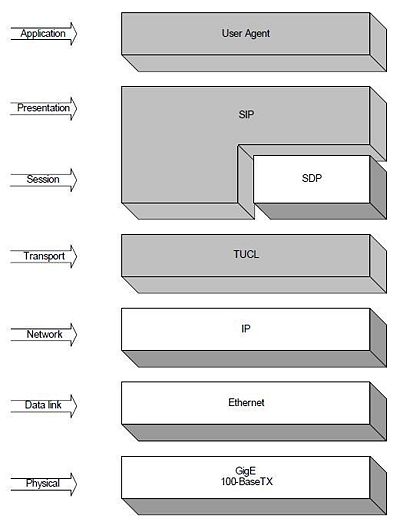TUCL
From TBwiki
(Difference between revisions)
(initial content) |
(→Features) |
||
| Line 9: | Line 9: | ||
== Features == | == Features == | ||
TUCL adds the following functionality to SIP: | TUCL adds the following functionality to SIP: | ||
| − | *Provides seamless access to any Ethernet interface on any TelcoBridges device (Tmedia, Tdev) | + | *Provides seamless access to any Ethernet interface on any TelcoBridges device ([[Tmedia]], [[Tdev]]) |
*Enables SIP to create Ethernet IP aliases (virtual IP). | *Enables SIP to create Ethernet IP aliases (virtual IP). | ||
*Tracing of packets to/from Ethernet interfaces. | *Tracing of packets to/from Ethernet interfaces. | ||
Revision as of 15:01, 10 August 2009
TelcoBridges' SIP implementation works on top of a couple of layers, including SIP and TUCL. TUCL stands for TCP/UDP Convergence Layer. TUCL offers TCP/IP and UDP/IP services to TelcoBridges' SIP stack. TUCL virtualizes physical Ethernet interfaces, making them globally accessible within the TelcoBridges' system.
In the following figure, grey boxes represent entities that need allocation on the TelcoBridges equipment. The TUCL layer is a transport layer used by SIP on our architecture. TUCL presents some advantages over a simple TCP/IP stack. For instance, it adds tracing facilities to any virtual interface.
Features
TUCL adds the following functionality to SIP:
